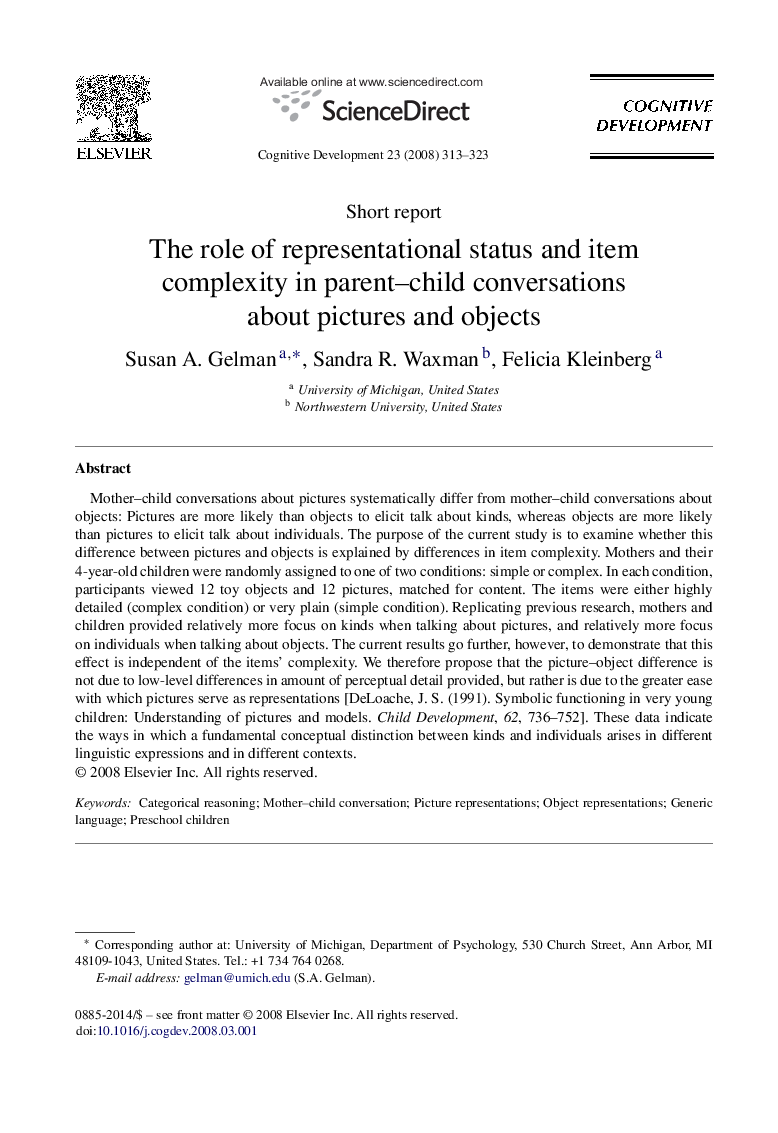| Article ID | Journal | Published Year | Pages | File Type |
|---|---|---|---|---|
| 916656 | Cognitive Development | 2008 | 11 Pages |
Mother–child conversations about pictures systematically differ from mother–child conversations about objects: Pictures are more likely than objects to elicit talk about kinds, whereas objects are more likely than pictures to elicit talk about individuals. The purpose of the current study is to examine whether this difference between pictures and objects is explained by differences in item complexity. Mothers and their 4-year-old children were randomly assigned to one of two conditions: simple or complex. In each condition, participants viewed 12 toy objects and 12 pictures, matched for content. The items were either highly detailed (complex condition) or very plain (simple condition). Replicating previous research, mothers and children provided relatively more focus on kinds when talking about pictures, and relatively more focus on individuals when talking about objects. The current results go further, however, to demonstrate that this effect is independent of the items’ complexity. We therefore propose that the picture–object difference is not due to low-level differences in amount of perceptual detail provided, but rather is due to the greater ease with which pictures serve as representations [DeLoache, J. S. (1991). Symbolic functioning in very young children: Understanding of pictures and models. Child Development, 62, 736–752]. These data indicate the ways in which a fundamental conceptual distinction between kinds and individuals arises in different linguistic expressions and in different contexts.
